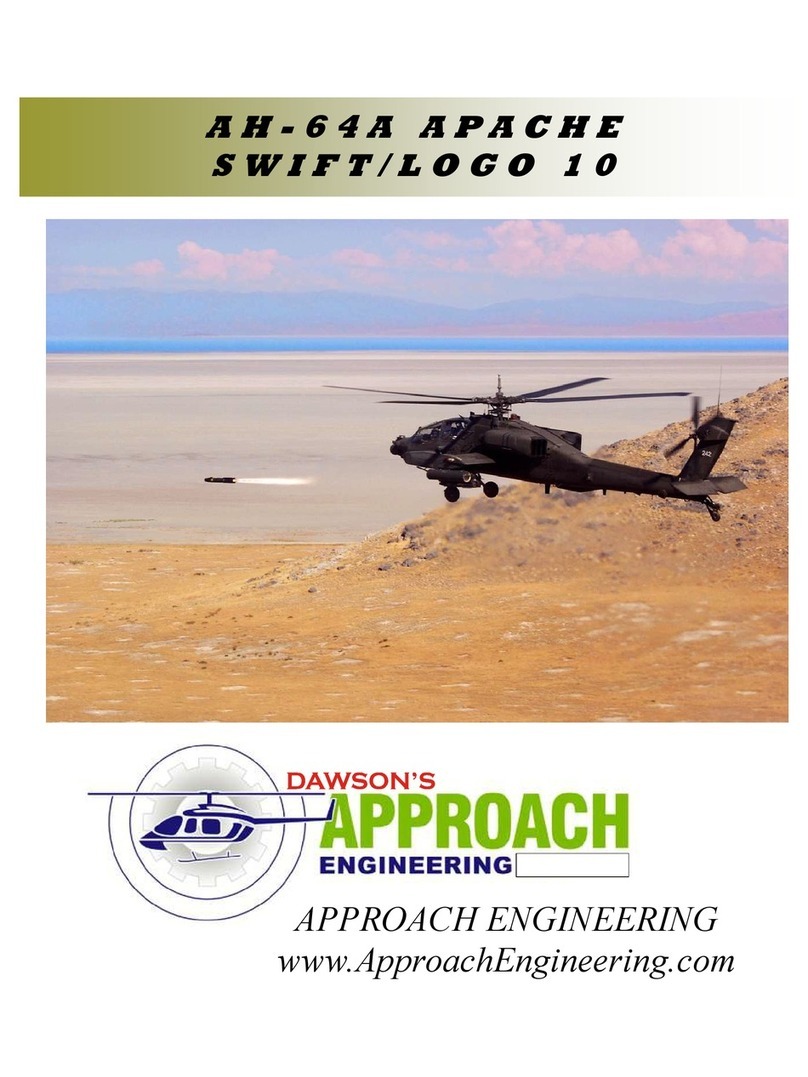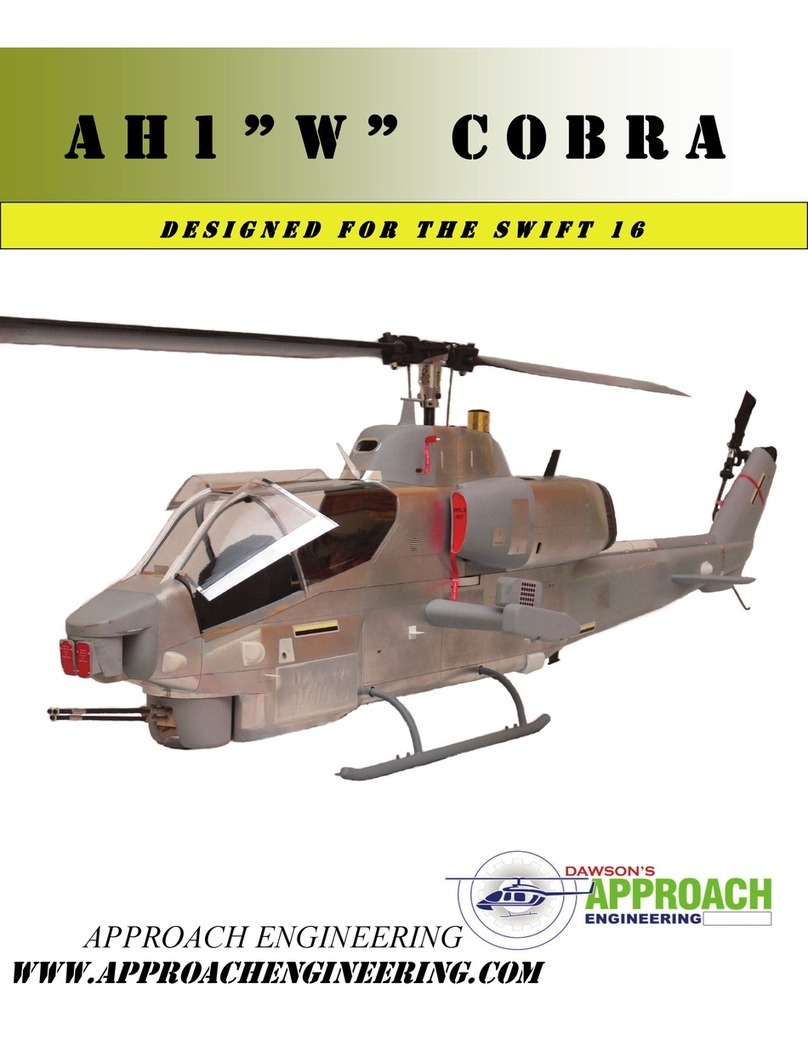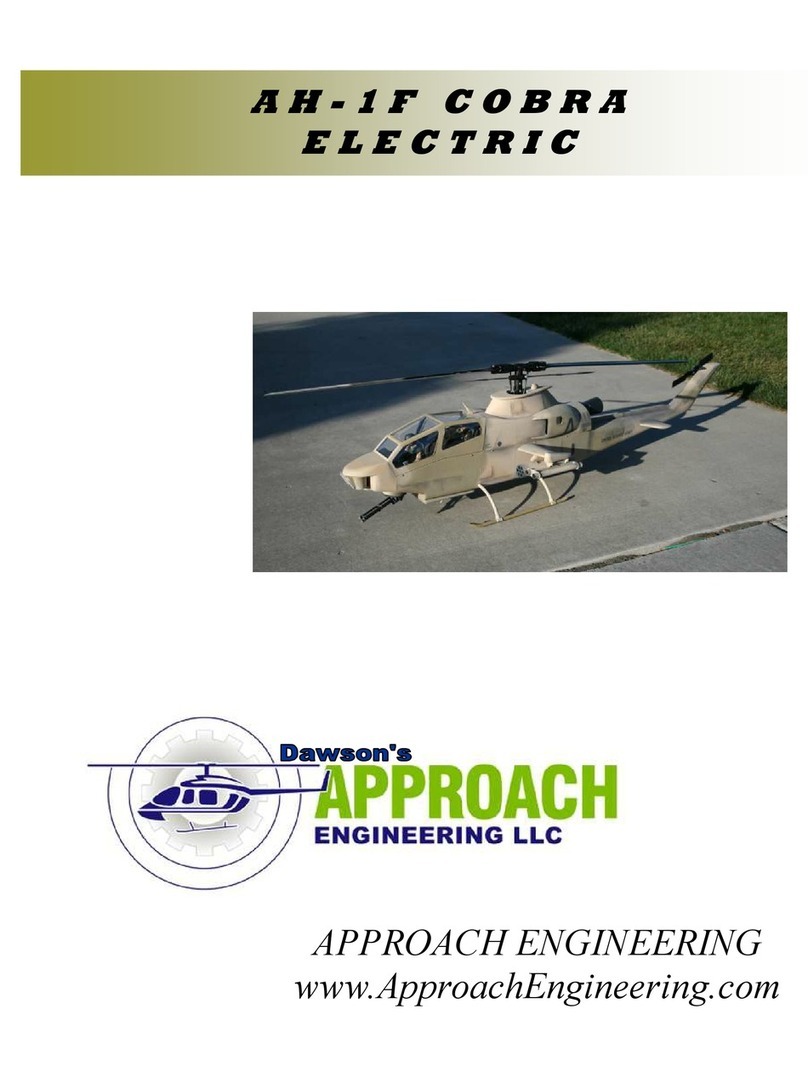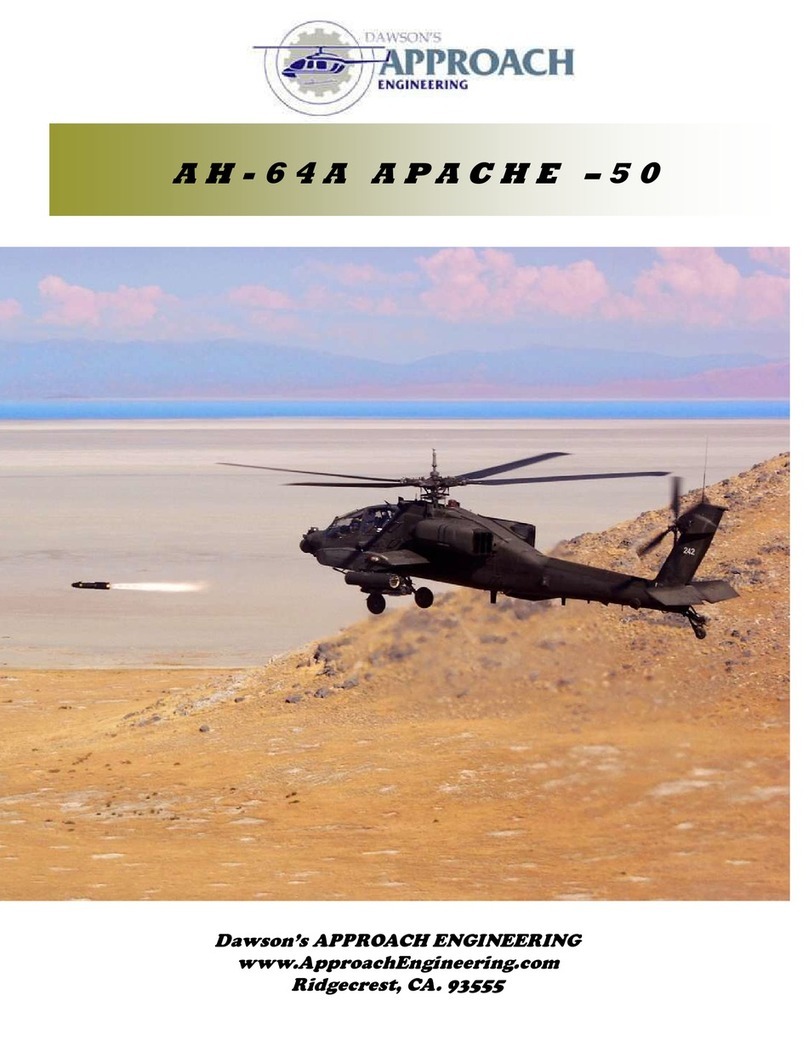
AH-1F COBRA 60 PAGE # 10
APPROACH ENGINEERING
AH-1F 60 MECHANICS
9.1 Punch out the 3/32” balsa canopy sides and the 1/8” lite
ply canopy guide teeth (CGT). Lay out the parts to build a right
and a left canopy side. Position the canopy guide teeth so that
the teeth extend past the bottom surface and match the bend
with the sides and equal 1/8” from ends. Glue with CA. cut
1/4” triangle stock (TRI-4) to fit between C-1, C-2, and C-3.
Line up the triangle stock with the printed reference lines.
9.3 When the glue has dried run a bead of glue up the remain-
der of C-1, C-2 and C-3. Using masking tape pull the canopy
sides to conform with the curve of C-1, C-2 and C-3. Sand the
top of the triangle stock flush with the canopy sides for cross
sheeting.
9.5 Carefully cut out the canopy top surface CT-1 from the
3/32” balsa. Glue on the top surface so that the front edge lines
up with the bend in the center canopy. Sand the canopy surface
flush with the center canopy surface.
9.2 Starting at the base, glue only 1” up on both sides of C-1,
C-2 and C-3 to the fuselage side and guide teeth. This will help
to build a straight canopy by first assembling it as a “box” struc-
ture.
9.4 Turn the canopy over and glue C-4 into place in the
notches in the canopy guide teeth. The bottom surface should
be flush with the edge of the canopy guide teeth.
9.6 Cut out the canopy center section CT-2 and complete the
step as earlier. Sand the front and rear edges flush as before.
Cut out the front canopy edge, CT-3 from the 3/32” balsa.
Align the front edge with the front of the canopy. Glue in place
with CA. When set sand the
back edge flush with the top
surface of CT-2.
9.0 CANOPY ASSEMBLY
Triangle Stock
extends past
upper edge.
Sand Flush
C-4
Sand this edge
flush
CT-2
CT-3































